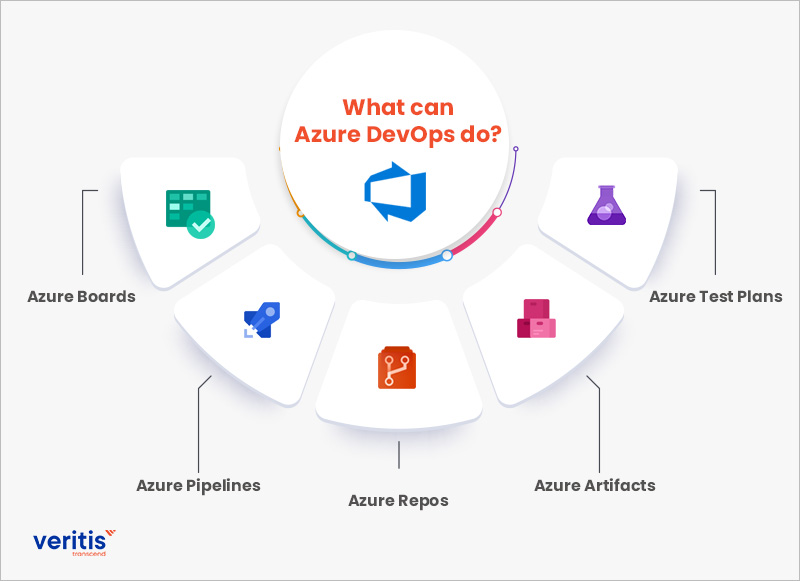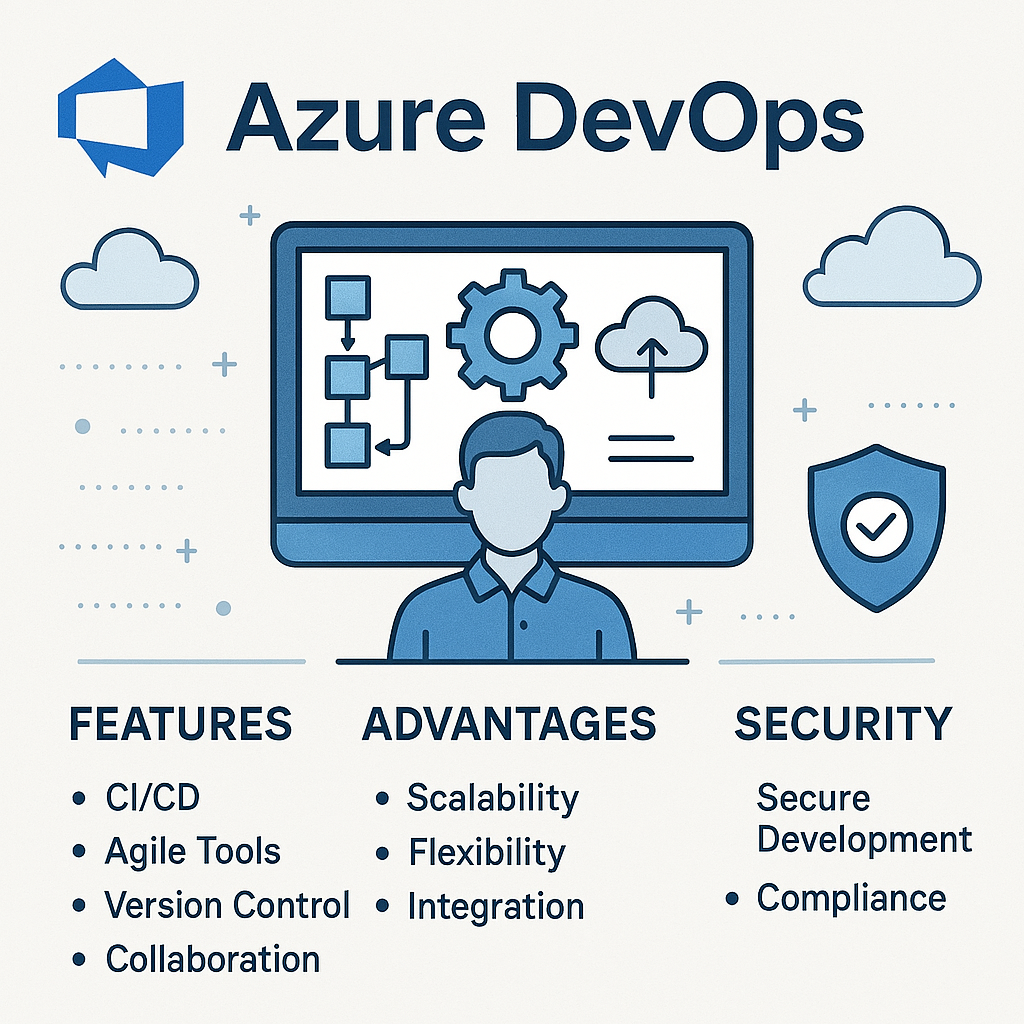Introduction
Overview of Azure DevOps
Azure DevOps is a comprehensive suite of tools and services designed to support the entire software development lifecycle. It integrates a variety of functionalities that foster collaboration, streamline development processes, and enhance productivity. The major components of Azure DevOps include:
- Azure Boards: For agile project management and tracking work items.
- Azure Repos: Offering version control repositories to manage code.
- Azure Pipelines: Enabling automated CI/CD practices to accelerate deployment.
- Azure Test Plans: Providing tools for manual and exploratory testing.
- Azure Artifacts: Facilitating the hosting and sharing of packages.
As organizations increasingly pivot towards agile methodologies, having a robust platform like Azure DevOps becomes essential.
Importance of Azure DevOps for Developers
For developers, Azure DevOps is a game-changer. It supports a collaborative culture, which is vital in modern software development. Here’s why Azure DevOps matters:
- Enhances Collaboration: Teams can work together seamlessly, breaking down silos between development and operations.
- Accelerates Delivery: With automated pipelines, developers can deliver features faster and more reliably.
- Supports DevOps Culture: It fosters a mindset of continuous improvement and integration, essential for any forward-thinking tech organization.
Integrating development processes with Azure DevOps saves time, enhances code quality, and increases customer satisfaction.

Azure DevOps Services
Azure Repos
Azure Repos provides a cloud-based version control system that supports both Git and Team Foundation Version Control (TFVC). This flexibility allows teams to choose the version control strategy that best suits their workflow.
Azure Pipelines automates the processes of building, testing, and deploying applications. By implementing Continuous Integration (CI) and Continuous Deployment (CD), developers can reduce manual processes and expedite delivery. After integrating Azure Pipelines into our workflow, we reduced deployment times significantly, allowing us to focus more on feature development instead of manual testing.
Azure Boards
Azure Boards is an agile project management tool that helps teams plan, track, and discuss work items. With customizable Kanban boards and sprint planning tools, teams can visualize and prioritize their tasks. Azure Boards for a sprint planning session, which helped us improve our workflow and stay focused on our main goals.
Azure Artifacts
Azure Artifacts empowers teams to efficiently manage dependencies and establish robust package feeds. This service supports package formats like NuGet, npm, and Maven, giving development teams the resources they need. Benefit from Azure Artifacts by centralizing libraries, which simplified dependency management.
Azure Test Plans
Azure Test Plans provide integrated testing tools for planning, tracking, and assessing testing efforts. It includes features for manual testing, exploratory testing, and capturing feedback. Using Azure Test Plans allows teams to document test cases and results, ensuring high-quality releases and enhancing application quality and user satisfaction.
These services create a strong framework that helps developers during the software development lifecycle, improving collaboration, efficiency, and product quality.

Features and Benefits
Integration with Azure Services
One of the standout features of Azure DevOps is its seamless integration with other Azure services. This provides developers with a rich ecosystem to build, deploy, and manage applications in the cloud. Azure Active Directory enhances security, while Azure Kubernetes Service enables scalable deployments. Together, these tools greatly improve productivity.
Continuous Integration and Continuous Deployment (CI/CD)
With Azure DevOps, implementing CI/CD practices becomes effortless. Automated pipelines ensure that code is built, tested, and deployed consistently, reducing the risk of human error. Teams experience increased deployment frequency and reduced lead time to release, which was crucial during tight project deadlines.
Agile Planning and Tracking
Azure Boards equips teams to seamlessly embrace agile methodologies. With customizable dashboards and detailed reporting options, teams can visualize progress and prioritize tasks. I recall using the Kanban board feature for a project, which significantly improved transparency and team engagement.
Collaboration Tools
Azure DevOps fosters collaboration through integrated tools that allow team members to communicate and share ideas effortlessly. The platform promotes teamwork through features like linking pull requests and assigning tasks, which are essential for cross-functional projects.
Reporting and Analytics
Lastly, Azure DevOps offers robust reporting and analytics capabilities. Teams can access real-time insights into project health, bottlenecks, and performance metrics. These analytics features to make data-driven decisions, ultimately leading to improved project outcomes.
These features improve efficiency and enhance the development experience, making Azure DevOps a complete solution for organizations.

Getting Started with Azure DevOps
Setting up a Project
Getting started with Azure DevOps begins with project setup. Create a new project by logging into your Azure DevOps account and clicking on the “New Project” button. You’ll be prompted to choose a visibility option—public or private. I suggest starting with a private project until you’re comfortable.
Configuring Pipelines
Once your project is set up, the next step is configuring your pipelines. Azure Pipelines can be configured through the intuitive interface or using YAML for more complex workflows. When I first configured a pipeline, I appreciated the step-by-step wizard that guided me.
- Use the “Pipeline” menu to select “New Pipeline.”
- Connect your source control, whether it’s Azure Repos or GitHub.
- Choose a template or define your steps manually based on application requirements.
Managing Repositories
To manage your code, navigate to Azure Repos. Create a new repository to host your project files. Here, you can manage branches, create pull requests, and implement code reviews. Personally, I found the integrated version control feature helped maintain code integrity among team members.
Tracking Work Items
Finally, leverage Azure Boards to efficiently monitor and manage work items. Develop user stories, tasks, and bugs to ensure project transparency and clarity. Using tags to categorize work items helps our team prioritize tasks for each sprint and stay on track.
By following these steps, you’ll be able to fully utilize Azure DevOps in your development projects.

Best Practices for Azure DevOps
Security and Compliance
As you dive deeper into Azure DevOps, prioritizing security and compliance is crucial. Implement concepts like DevSecOps to integrate security practices into your development lifecycle seamlessly. When my team started incorporating security checks early in the process, we mitigated vulnerabilities before they even reached production. It’s essential to:
- Enforce strong identity access management (IAM) through Azure Active Directory.
- Utilize tools for automated vulnerability testing to ensure code safety.
- Regularly audit your projects to maintain compliance with industry standards.
Automation Strategies
Automation is one of the cornerstones of Azure DevOps. Streamlining repetitive tasks enhances efficiency and allows teams to focus on innovation. During a recent project, we automated our testing processes and deployment pipelines, significantly reducing manual work. To get the most out of automation, consider:
- Setting up Continuous Integration (CI) and Continuous Deployment (CD) pipelines.
- Utilizing approval gates in pipelines to ensure quality at each stage.
- Implementing automated regression tests to catch issues early.
Monitoring and Optimization
Finally, consistent monitoring and optimization are key to improving your DevOps environment. Use Azure Monitor and Application Insights to gather performance metrics and identify bottlenecks. From my experience, actively analyzing our pipeline performance led to critical adjustments that enhanced our overall delivery speed. Always:
- Set up alerts for potential failures or performance issues.
- Review analytics regularly to identify trends and areas for improvement.
- Conduct post-mortems after significant releases to learn from successes and failures.
Applying these best practices, teams can ensure a secure, efficient, and high-performing Azure DevOps environment.
Advanced Topics
Scaling Azure DevOps for Large Projects
As projects grow in complexity and scale, it’s essential to optimize Azure DevOps to manage increased demand efficiently. In a large-scale initiative, teams can break projects into smaller, manageable parts handled by different teams. This approach allows:
- Implement a multi-team structure, ensuring clear ownership of different modules.
- Use shared repositories to streamline code sharing while maintaining control.
- Implement sophisticated branching strategies to effectively reduce integration challenges.
Customizing Workflows
A significant advantage of Azure DevOps is its ability to customize workflows to align with your specific processes. Teams can customize work item types to align with their development phases and project needs. Key customization options include:
- Creating tailored work-item templates to meet diverse reporting requirements.
- Creating branch policies to enforce coding standards at the team level.
- Configuring notifications and alerts to align with team responsibilities, improving communication.
Extending Functionality with Extensions
Lastly, Azure DevOps offers a rich marketplace of extensions that can enhance its functionality. By exploring these extensions, teams add features like time-tracking tools and enhanced reporting capabilities. Some valuable categories to consider are:
- Integration with third-party applications like Slack or Jira for better communication.
- Testing tools that enhance automated testing workflows.
- Analytics extensions for advanced reporting and visualization.
By leveraging these advanced topics, teams can maximize Azure DevOps’s potential, effectively handling complex projects and driving successful outcomes.
Case Studies and Success Stories
Real-world Examples of Azure DevOps Implementation
Numerous organizations across various industries have successfully implemented Azure DevOps to streamline their development processes. One notable example is Microsoft itself, which uses its platform to build Azure products. By leveraging Azure DevOps, Microsoft has achieved seamless integration across development teams, allowing for faster release cycles and improved collaboration.
Another compelling case is Coca-Cola, which utilized Azure DevOps for its global IT transformation. By adopting this suite, they enhanced project visibility and reduced time to market for their digital initiatives.
Business Benefits and Results
The impact of embracing Azure DevOps extends far beyond simple efficiency gains. For Coca-Cola, the switch resulted in:
- A 30% reduction in development time, empowering quicker iterations.
- Improved team satisfaction due to better collaboration tools, leading to higher employee retention.
Microsoft reported significant productivity increases due to the integration of CI/CD pipelines, which resulted in faster feedback loops and enhanced innovation.
Implementing Azure DevOps can speed up delivery and improve code quality, showing that these tools can greatly enhance development operations. These examples show that with the right approach, Azure DevOps can provide significant business value and promote a culture of continuous improvement.
Conclusion
Recap of Azure DevOps Benefits
In conclusion, Azure DevOps emerges as a powerful tool that integrates various facets of the software development lifecycle. Its robust components—Azure Boards, Repos, Pipelines, Test Plans, and Artifacts—collaboratively enhance productivity and streamline workflows. Facilitating collaboration, speeding up software delivery, and supporting a strong DevOps culture are essential benefits for any organization.
Future Trends and Developments in DevOps
Looking ahead, several trends are shaping the future of DevOps. The focus on AI and machine learning will automate decision-making, and improved security measures like DevSecOps will integrate smoothly into pipelines. Organizations are also embracing hybrid models, combining on-premises and cloud solutions for greater flexibility.
Summary and Value for Developers and Organizations
For IT professionals and technology managers, understanding Azure DevOps is not just a competitive advantage; it is essential. To get started, follow simple setup steps and integrate your existing developer tools. There are plenty of learning resources to help you. Implementing Azure DevOps can improve security and compliance with features like identity access management and automated vulnerability testing.
Adopting Azure DevOps enables developers and organizations to foster innovation and continuous improvement, making it essential for modern software development.
For More Information
Check out my AI-generated podcast here:




